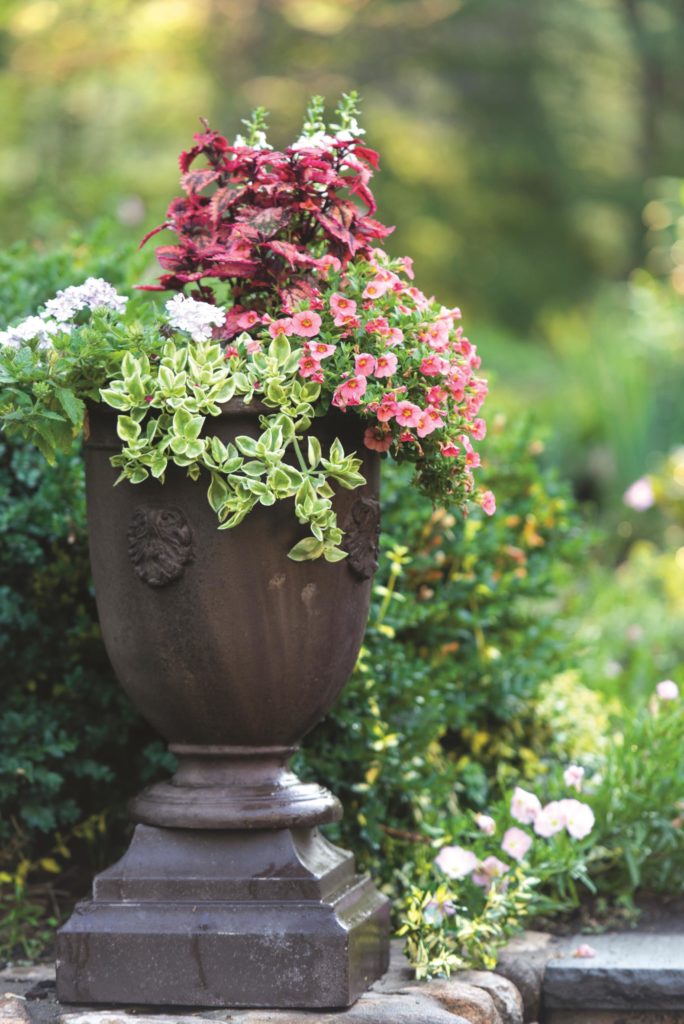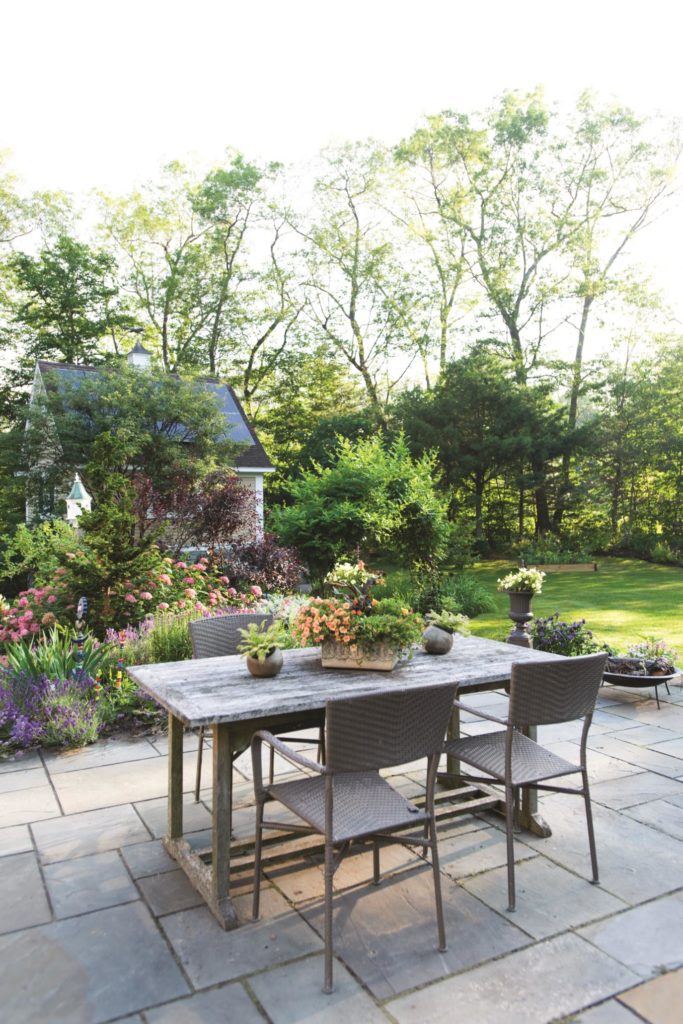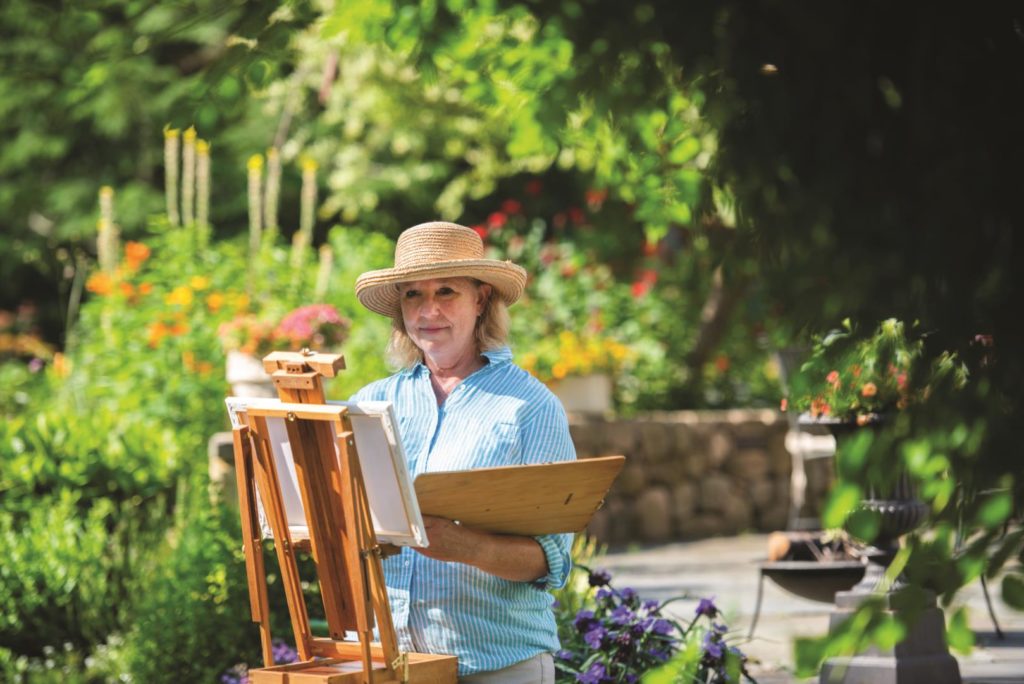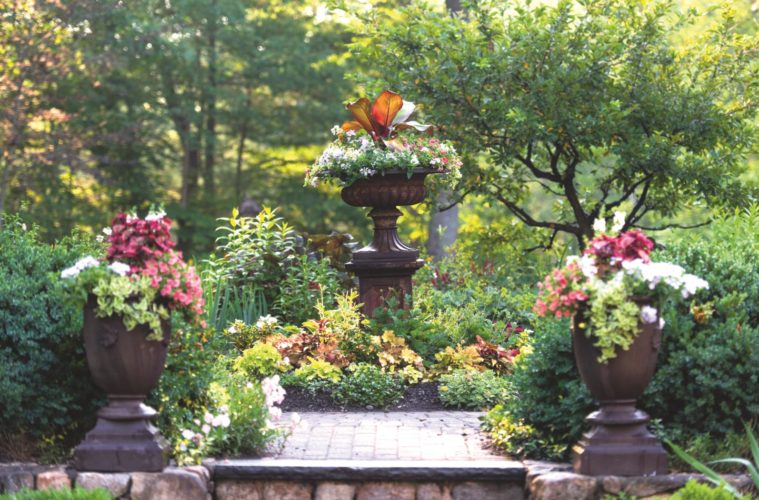Margo Pullman was willing to wait for her Eden. Never one to rush into anything headlong, the artist/floral designer put all her pieces in order before diving into fully designing her own backyard. But that’s the way Pullman rolls. She had a vision for her 1 1/2-acre West Newbury garden, and she waited patiently until a house addition was complete before swinging fully into action. In the meantime, she did a lot of gardening in containers. And that activity proved to be an internship for the container-rich garden that she ultimately fashioned.


Currently, Pullman is the vice-chair of the Museum of Fine Art Associates, responsible for guides and floral design volunteers as well as playing a key role organizing their Art in Bloom event. As an artist, she works in oils, pastels, and watercolors while also doing floral design and teaching. The fact that her art studio sits in the midst of her garden has everything to do with the final outcome of the design and the artistic compositions that result. Like a canvas, the garden provides a melodic, soothing backdrop for her work in the studio, as well as being one of the works itself. However, designing one static scene wasn’t sufficient to feed her creative drive, so she additionally whips up fifteen to twenty containers every year as a means to spin a new color story seasonally. The whole picture translates into living art.
Of course there was a garden present before the 2010 addition—Pullman cannot reside anywhere without digging in. But she calls it her “adolescent garden” compared to the mature version now surrounding the Colonial that has been her family’s home since 1999.
Twenty years ago when she moved in, a love for the property blossomed immediately. Then after living in the house for 10 years, the family needed to expand its footprint to include a larger kitchen, a master bedroom suite, and a screened-in porch. Construction involved digging up all Pullman’s previous hard work, but it also offered an opportunity to develop additional outdoor living space. For example, while leaving the trees that ring the property and provide a privacy screen were left in place, 40 other trees were removed close to the house, increasing the penetration of sunbeams. Although ledge renders large spaces inappropriate for in-ground plantings, plenty of room remains for patios and bold, functional hardscape. Plus, Pullman got the soil she had always craved after excavation required remedial backfill.


Rather than just going with any old dirt, she inserted an amended mixture of black gold. “I got the dirt of my dreams,” she jokes—and the lilies love it.
Now, gardens weave wherever ledge allows. Beds accompany the driveway as it curves from the street, and borders in this plant-rich place also escort brick pathways that lead to all the outdoor spaces. As in the arrangement, the foliage creates a restive moment while exclamation points of color dapple the scene. The ingredients deliberately work a dialogue at all times of the day, from the variegated iris, phlox, and Hakonechloa selected to glow when sunbeams hit their leaves to the various shades of green that read differently from daybreak to twilight. But what really captures the eye are the many urns raised on their pedestals holding unique and painterly combinations of plants that are truly living, growing art.
Why urns? The backstory is seriously practical. “It was a lot about outwitting the woodchuck,” Pullman confesses. The urns on their plinths were a brilliant solution for elevating plants above a woodchuck’s easy reach. And woodchucks aren’t the only issue in this garden. “With all the stonewalls on this property, chipmunks are my nemesis,” Pullman adds. The raised containers keep plants out of easy browsing reach for all four-legged conspirators. But of course, the artistic opportunities that urns provide are what really intrigues Pullman. “I value their architectural interest,” she says of the carefully selected containers themselves, “and they add visual height.” Plus, the plant fillers offer a critical creative element. “I like that they are the focus, you need that resting point in a garden to appreciate all the other textures. Container plants underscore the color story,” she explains, referring to her overall method of working green together with brighter accent hues. “Like beacons, they beckon you to look more closely.”
Notably, Pullman often edits her containers and rethinks the arrangements seasonally, and autumn furnishes an excuse to swing into revamp mode. “I love to incorporate fall colors,” she says. In fact, she carefully nurtures her plants to reinstall when autumn arrives. “If I’ve done due diligence by cutting back and feeding my pansies, I can reinsert them into containers.” But pansies are only part of the picture, because she goes the gamut of cascading plants and mounds of color. She uses words like “vibrant” and “edgy” when talking about the compositions. “It’s a lifelong journey,” she says.” In this North Shore garden, that concept rises to another level.

